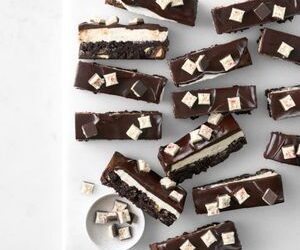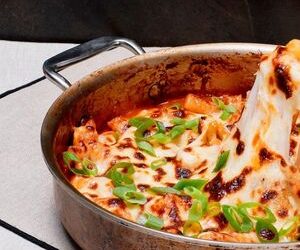Perfectly sweet sugar cookies are an irresistible treat around the holidays (or any day if we’re being honest). Whether crisp and snappy, soft and chewy, or intricately decorated, there’s a sugar cookie for everyone. Our basic sugar cookie recipe is a favorite in Martha’s kitchen, and for good reason. The recipe is as simple as they come. The standard butter and sugar-based cookie dough is quick and easy to whip up—all you need is a stand mixer. Once you roll out the dough, it can be used to create any whimsical shapes you like (or keep it classic and opt for more traditional circles).
Carson Downing
Learn what makes our sugar cookie recipe so special, and get our tips for baking and decorating these sweet treats.
What Is a Sugar Cookie?
Technically, every cookie is a sugar cookie if it has…well, sugar. The types of cookies that we usually label as “sugar cookies” can be divided into two main categories: sturdy cookies for decorating (like this recipe) and soft and chewy cookies (like Snickerdoodles).
Both of these types of cookies start in the same way; butter and sugar are creamed together before eggs, flour, and leavening agents (like baking soda and baking powder) are mixed in to form a dough. The overall texture of the sugar cookie will depend solely on the ratios of fat, sugar, and flour.
Sugar Cookie Ingredients
- Sugar: Sugar not only makes the dough sweet, but it also keeps the dough tender. We particularly love this recipe because it has the perfect amount of sugar—the dough isn’t too tender, so it’s easy to roll without cracking around the edges.
- Flour: The more flour that goes into cookie dough, the more crumbly and crisp it will be. Recipes for softer sugar cookies like snickerdoodles will have less flour than firmer decorated sugar cookies.
- Butter: Butter adds a lot of flavor to cookies and affects the overall texture. More butter will create a softer, chewier dough.
- Eggs: The main role of eggs in cookie dough is structure and moisture. The proteins in the eggs bind to the starch in flour and help hold the dough together.
- Leaveners: Baking powder (and sometimes baking soda) is added to cookie dough to help the dough rise and spread. Baking soda is not included in our recipe because it enables browning (this has to do with the pH level) and we want our sugar cookies to stay pale in color.
Martha likes to add 1 tablespoon of cognac to the dough to add some depth of flavor. You can use fresh orange juice if you prefer.
Rolling, Cutting, and Baking Sugar Cookies
Rolling:
- Chill the dough as a flat disk. The thinner the piece of dough, the less time you will spend rolling it out later.
- Dust a clean work surface with some flour, starting with a light coating and adding more if needed.
- Let the dough rest at room temperature for a few minutes before you start rolling. You want the dough to stay chilled, but if it’s too cold, it can start to crack as you roll it out.
- Apply firm and even pressure, starting from the center and working your way out to the edges. Let the rolling pin do the bulk of the work and rotate the dough slightly each time you roll.
Cutting:
- If the dough has warmed up too much in the rolling process, pop it onto a parchment-lined baking sheet and refrigerate it for about 10 minutes, or until it is firm again.
- Dip your cookie cutter into flour to keep it from sticking to the dough as you cut.
- Cut out shapes as close to one another as you can so you don’t have too many scraps.
- Scraps can be rerolled and used one more time to cut out more cookies. Any scraps you have left after this should be discarded, as they will become tough after too much rolling.
Baking:
- Arrange the cookies a few inches apart on baking sheets lined with parchment paper or silicone baking mats.
- The cookies will spread less if they go into the oven while they’re still a bit cool and firm to the touch. To keep them perfectly shaped, let them set up in the freezer for just a few minutes before baking.
- Rotate the pans once as they bake. Most ovens have hot spots, so rotate the pans and their oven rack positions halfway through baking to ensure they are evenly cooked.
Decorating Sugar Cookies
Sugar cookies can be as simple or decorative as you like. To keep it straightforward, add sprinkles, sanding sugar, or nonpareils to the cookies before baking. They will add fun colors and crunch to the cookies, and kids always love them.
You can also decorate the cookies with icing. Royal icing is ideal for intricate designs, but a simple confectioners’ sugar glaze adds a nice amount of sweetness as well. Gel-based food coloring can be added to either of these decorating options.






